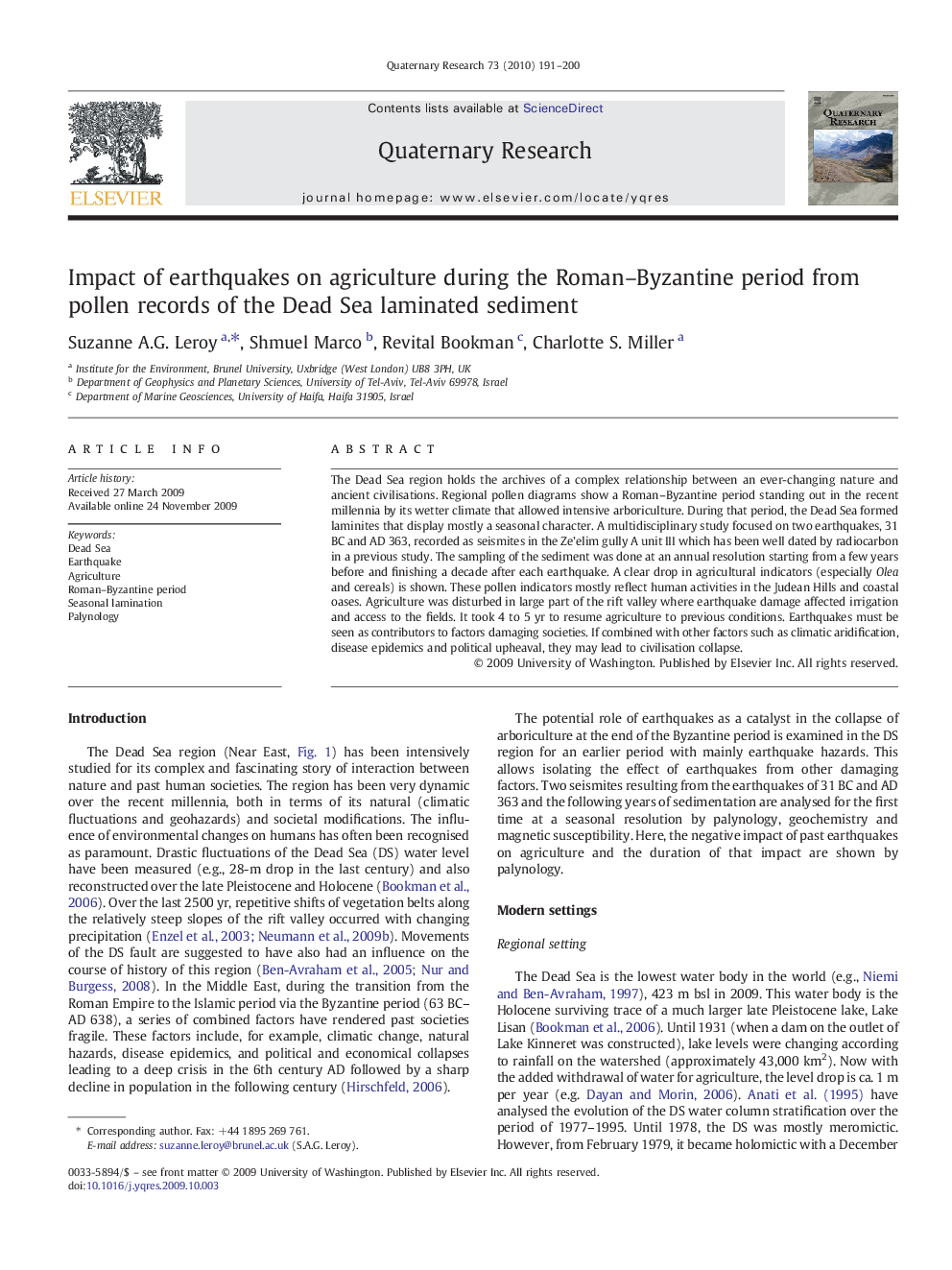| کد مقاله | کد نشریه | سال انتشار | مقاله انگلیسی | نسخه تمام متن |
|---|---|---|---|---|
| 1045504 | 944819 | 2010 | 10 صفحه PDF | دانلود رایگان |

The Dead Sea region holds the archives of a complex relationship between an ever-changing nature and ancient civilisations. Regional pollen diagrams show a Roman–Byzantine period standing out in the recent millennia by its wetter climate that allowed intensive arboriculture. During that period, the Dead Sea formed laminites that display mostly a seasonal character. A multidisciplinary study focused on two earthquakes, 31 BC and AD 363, recorded as seismites in the Ze’elim gully A unit III which has been well dated by radiocarbon in a previous study. The sampling of the sediment was done at an annual resolution starting from a few years before and finishing a decade after each earthquake. A clear drop in agricultural indicators (especially Olea and cereals) is shown. These pollen indicators mostly reflect human activities in the Judean Hills and coastal oases. Agriculture was disturbed in large part of the rift valley where earthquake damage affected irrigation and access to the fields. It took 4 to 5 yr to resume agriculture to previous conditions. Earthquakes must be seen as contributors to factors damaging societies. If combined with other factors such as climatic aridification, disease epidemics and political upheaval, they may lead to civilisation collapse.
Journal: Quaternary Research - Volume 73, Issue 2, March 2010, Pages 191–200